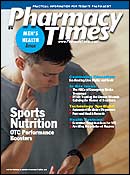Publication
Article
Pharmacy Times
editor'sNOTE: E-prescribing: The Need Is Here
Author(s):
Mr. Eckel is professor and director ofthe Office of Practice Developmentand Education at the School ofPharmacy, University of North Carolinaat Chapel Hill.

For years, the adoption of electronicprescribing (e-prescribing)has proceeded at a crawl. Withgrowing pressure from legislators to mandatee-prescribing for Medicare, however,we may see the pace accelerate. Italso appears that the Drug EnforcementAdministration (DEA) may finally be enteringthe 21st century by recognizing theneed for e-prescribing of scheduled drugs.
The current requirement to manuallyprescribe controlled drugs often has beencited as one of the biggest obstacles towider adoption of e-prescribing. The DEAhas been slow to propose changes, andits caution is somewhat understandablegiven the growing abuse of scheduleddrugs due to the spread of illicit Internetoperations. E-prescribing of all drugs,including controlled drugs, however,will be essential as we move toward afuture based on electronic health records.Without integrated prescription informationfor all drugs, the value of theserecords will be greatly reduced.
This is why the DEA's decision to publishproposed e-prescribing requirementsis a welcome step. I encourage pharmaciststo review the DEA's proposed rule,published June 27, 2008, in the FederalRegister, to ensure that it will work forpharmacists and prescribers. The DEA isaccepting comments until September 25.
The DEA's proposal comes at a timewhen lawmakers are displaying increasingimpatience at the slow adoption of thetechnology. Even though e-prescribing isgrowing, it still accounts for only a smallpercentage of the nation's prescriptions.Many in Congress see the technology as away to save billions of dollars while reducingmedical errors, which is why they areconsidering legislation that would mandatee-prescribing for Medicare by 2011,with penalties for physicians who do notquickly adopt the technology.
Another development that could advancee-prescribing is the merger of theSureScripts and RxHub networks to createa unified national e-prescribing network.
Of course, e-prescribing is not free ofproblems. One is the cost of transmittingtransactions, which can consume asignificant proportion of dwindling reimbursements.SureScripts and RxHub saythat their merger ultimately could resultin lower prescription routing costs due toincreased use of e-prescribing.
The National Alliance of State PharmacyAssociations is gathering informationabout pharmacists' e-prescribingexperiences; you can help by reportingyours at www.pqc.net/eprescribe/disclaimer.htm. As the pressure to adopte-prescribing grows, it will becomeincreasingly important for us to getinvolved with the technology—and makesure our opinions and experiences areheard.







